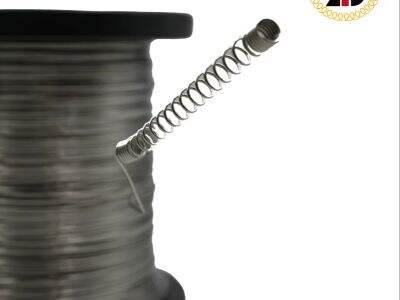Wire is an integral part of many electronic devices and appliances that we use every single day. You might not realize it, but wires allow many things to function: our lights, our kitchen appliances, for instance. There are mainly two types of wires, resistance wire and heating wire, which conduct electricity for certain purposes. From an external perspective they may appear similar, but they are intended to do different roles. Types Of Difference On Resistance Wire Or Heating Нихромовая проволока Difference, In this text, we will discuss what are the dissimilarities between resistance wire and heating wire, also we will learn how each is used in our day to day life.
Differences in Wire Types
The materials from which the resistance wire and the heating wire are made is one of the most referring differences between both провод веревка. These are commonly derived from metallic alloys manufacturers develop, like Kanthal or Nichrome. These alloys will be used as they have a good resistance to electricity. The point is when electric current attempts to go through electric resistance wire, it does not go through raw material easily. Instead, the wire heats up. This is useful for producing heat in appliances such as electric heaters and toasters.
Heating wire, in contrast, is usually composed of copper or aluminum. These materials offer exceptional thermal conductivity. Therefore, heating wire can rapidly conduct heat from a source to another location, essential for many types of heating, including food and water heating.
Why the Materials Differ
Resistance wire vs heating wire, this difference in the materials used is critical since all Провод Fe-Cr-Al is manufactured for a particular purpose. Resistance wire is used in applications in which we need to generate heat by resisting the flow of electricity. In an electric heater or a toaster, for instance, when current passes through the resistance wire, it warms up, giving us the heat we require.
On the other side, we use heating wire where we want to transfer heat effectively. For example, it helps remove smoke and heat while we are cooking in a stove, in a range hood above her stove, heating wire. This means a safe and comfortable kitchen for us.
Как они используются
So let me explain different types of resistance wire and heating wire and how they are used in different applications and why these applications are required. × You are using an out of date browser. It is equipment like incubators, used to keep eggs warm until they hatch; desert-related laboratory ovens that must hold precise heat levels for experiments.
Unlike heating wire, used in processes requiring limited heating time. An example is that of large industrial ovens, where they contain heating wire to very rapidly heat large quantities of food or materials. It can also be used in warming blanket or heated floor. In those instances, the heating wire distributes warmth uniformly across a surface to help us feel comfortable on cold days.
Примеры использования
So in order to understand these differences better, let’s take a look at how a toaster works. The toaster employs resistance wire to toast bread. For example, when you place bread in the toaster and press down the lever, power moves through the resistance wire. That wire gets hot, and heats the bit of bread that passes over it. This occurs very quickly so you can have your toast in a few minutes.
Now, consider a toaster oven. Accessories of Toaster OvenIt is a very common appliance, a toaster oven may be a common one, but it can make use of heating wire to allow the food to cook faster and evenly. The heating wire transfers from the heating element directly to the food. This allows the food to cook all the way, making the food tasty and ready to eat.

